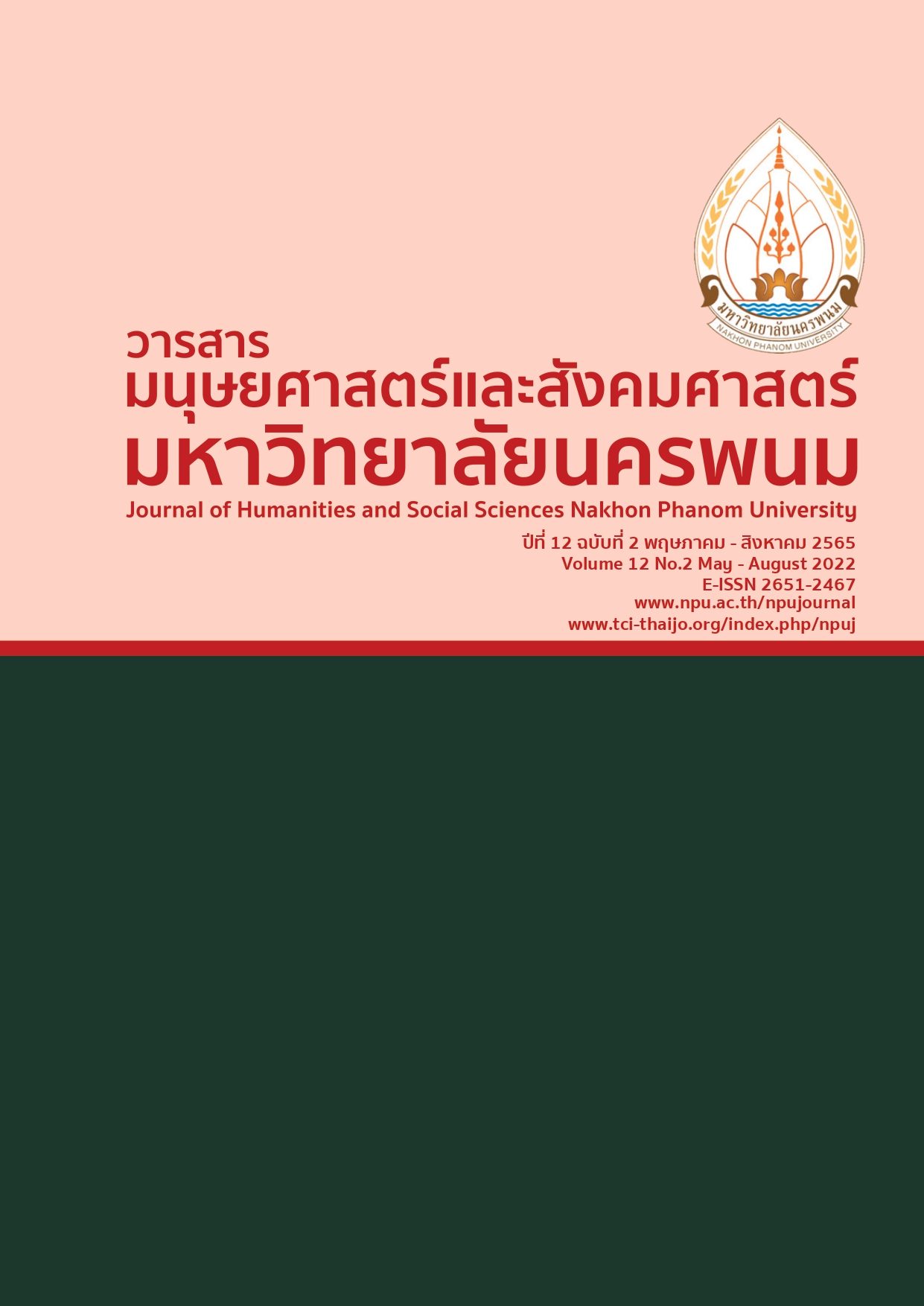The guideline to Promote Thailand’s Tourism Marketing for Indian Tourists after the Covid-19 crisis
Main Article Content
Abstract
The objectives of this research were to study the surrounded factors of Thailand's tourism industry for Indian tourists, and propose the suitable guidelines to promote the marketing of Thailand’s tourism for Indian tourists after the Covid-19 crisis. This research was qualitative research. The data was collected using semi-structured interview. The 15 informants were selected using purposive sampling method and snowball sampling. The data was verified using triangulation. The results found that Indian tourists were the high potential tourists and like oversea traveling for recreation or wedding ceremony, and Thailand was chosen as a destination because of the prosperous tourist resources. There are various tourisms in each region of Thailand driving to a large amount of income, but the highest number of Covid-19 cases in India causing the strict regulations and long session for travelling as well as the neighbor countries in Asia was an important competitor attracted the market share of India tourists were the obstacles. This research proposed the additional guidelines to promote the marketing of Thailand’s tourism for Indian tourists after the Covid-19 crisis from marketing mix 7P’s such as the potential; building up of a suitable community-based tourism for Indian tourist’s travelling behavior, prospect; opportunity creation to attract new group of Indian tourist and urge the primary Indian tourist group to travel to Thailand through the campaign new perspective of Thailand tourism after the COVID-19 crisis, and path safe; building up the trust for tourists especially the safety of travelling in Thailand.
Article Details

This work is licensed under a Creative Commons Attribution-NonCommercial-NoDerivatives 4.0 International License.
References
Bangkokbiznews. (2020). čhaptā ʻirān - saha rat khatyǣng ʻIndīa bēn khem thīeo Thai [Keep an eye on the conflict between the United States and Iran & India 'deflect to Thailand]. Retrieved on January 17, 2020 from
https://www.bangkokbiznews.com/news/detail/861131
Tourism Authority of Thailand. (2018). thō̜ thō̜ thō̜ buk talāt ʻIndīa pœ̄t tūa khǣmpēn “Open to the New Shades of Amazing Thailand” wang dưng nakthō̜ngthīeo sakkayaphāp thīeo mư̄ang Thai tō̜nư̄ang [TAT invades Indian market
for launches campaign: Open to the New Shades of Amazing Thailand that hoping to attract potential tourists to continue travel in Thailand]. Retrieved on Feb 24, 2561 from http://tatnewsthai.org/detail.php?newsID=4690&
fbclid =IwAR3NOIywNOAW01uxEsgRfl7vTXB_GcsgktZV-F5VSN53vlTrAm7nO9pqMA
Anusonphat, N., (2020). kān prap tūa thāng sētthakit dān kānthō̜ngthīeo nai saphāwa wikrit khō wit sipkāo [Economic Adjustment in Tourism under the Coronavirus Disease 2019 Crisis in Thailand]. Journal of humanities and social
sciences. 8(1): 1-25.
Kijpredarborisuthi, B. (2011). rabīap withīkān wičhai thāng sangkhommasāt (Phim khrang thī sipʻet) [Research Methods in Social Science (11th edition)]. Bangkok: Chamchuri Product. Tatannsuwan, S., (2020). phonkrathop chư̄a
wairat COVID - sipkāo tō̜ wikrit kānthō̜ngthīeo khō̜ng prathēt Thai [Impact of COVID-19 on Tourism Sector in Thailand]. Retrieved on August 15, 2020 from http://library.senate.go.th/e-library/web/main.jsp?HMS=1582257832967
Sereerat, S. & et al. (2017). phrưttikam ʻongkān [Organizational Behavior]. Bangkok: Theera film & Scitex co., ltd.
Tangtenglam, S. and Pongpanich. A. (2020). patčhai thī mī phon tō̜ kānlư̄ak kāndœ̄nthāng thō̜ngthīeo phư̄a pen rāngwan nai prathēt Thai khō̜ng nakthō̜ngthīeo chāo ʻIndīa [Factors Affecting Thai Consumer Decisions Incentive Travel
of India Tourist to Thailand]. Journal of Multidisciplinary in Humanities and Social Sciences. 3(3): 503-517.
Khemthong, S. (2011). khwāmrū bư̄angton kīeokap kāntalāt kānthō̜ngthīeo læ kān rōngrǣm . ʻēkkasān kānsō̜n wichākān čhatkān kāntalāt phư̄a kānthō̜ngthīeo læ kān rōngrǣm nūai thī nưng [Introduction of Tourism Marketing and
Hospitality, Teaching Document of Tourism and Hospitality Marketing Management Unit 1]. Bangkok: Sukhothai Thammathirat Open University.
SME in Focus. (2019). ʻIndīa čhōt mai thurakit thō̜ngthīeo Thai [India, a new challenge for Thai tourism business]. Retrieved on September 17, 2019 from https://www.bangkokbanksme.com/en/ indian-thailand-tourism-business.
Lincharoen, U. (2014). kānphatthanā rūpbǣp kānčhat krabūankān rīanrū rư̄ang kānsưksā chumchon phư̄a sư̄pkhon ʻongkhwāmrū læ phūmpanyā thō̜ngthin [A development of the learning process model on studying community for
finding the knowledge and local wisdom]. Pibulsongkram Rajabhat University, Phitsanulok Province.
Bright hup PM project management. (2011). PESTLE Analysis history and application. Retrieved from http://www.brighthubpm.com/project-planning/100279-pestle-analysis-history -andapplication/
SME Thailand club. (2020). Turn crisis into opportunity: Launched the "tourism business" plan to deal with COVID-19 for increasing the odds of future. Retrieved on February 27, 2020 from
https://www.smethailandclub.com/entrepreneur-5492-id.html
Economic intelligence Center. (2020). India Tourism: new potential tourists that Thailand must Keep an eye on Indians. Retrieved on May 15, 2019 from https://www.scbeic.com/th/ detailproduct/6094
Kotler, P. and Armstrong, G. (2003). Principles of Marketing (9th ed.). Boston: McGraw-Hill, Inc.,
Renewal Associates, (2003). PESTLE Analysis- a model framework. On 2 May 2007. Retrieved from www.renewal. www.renewal.eu.com assessed


